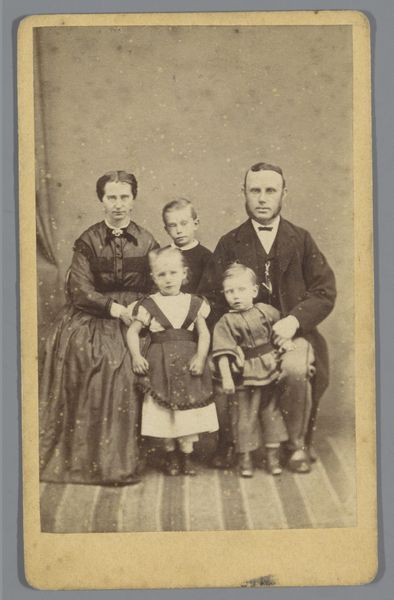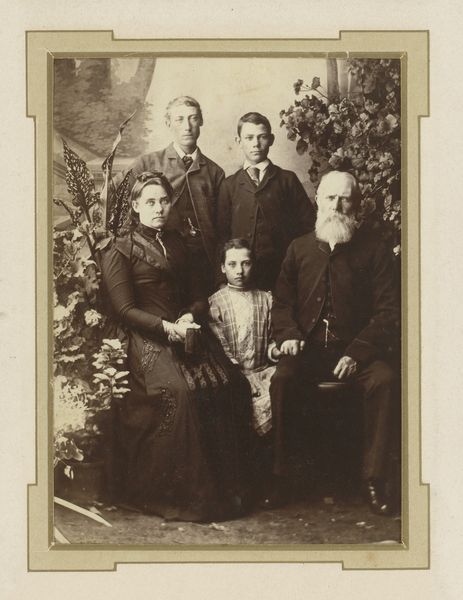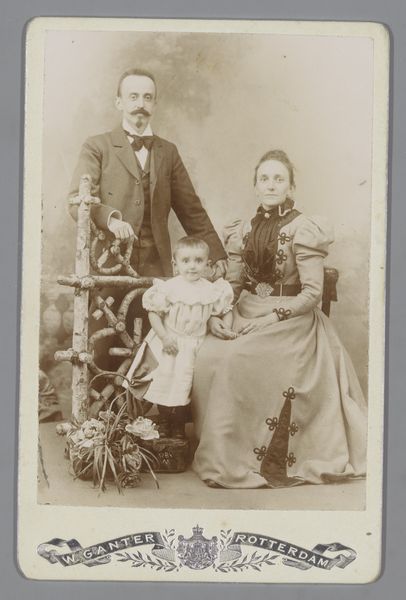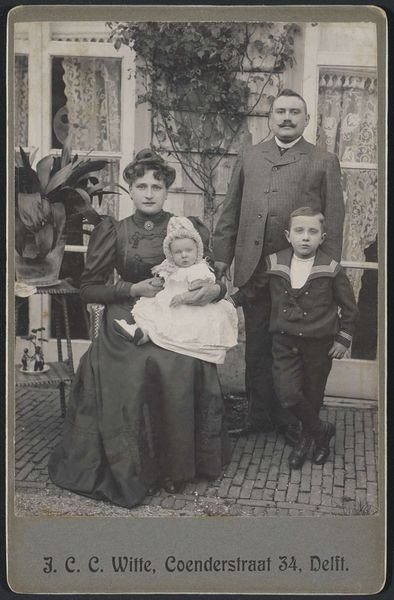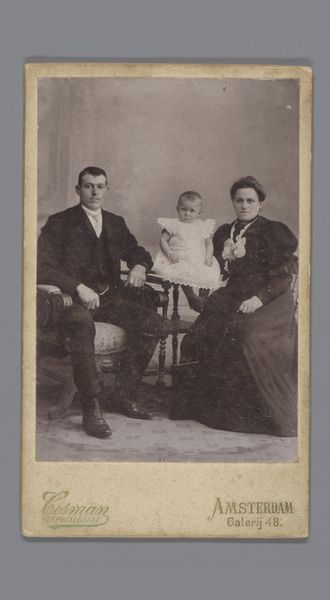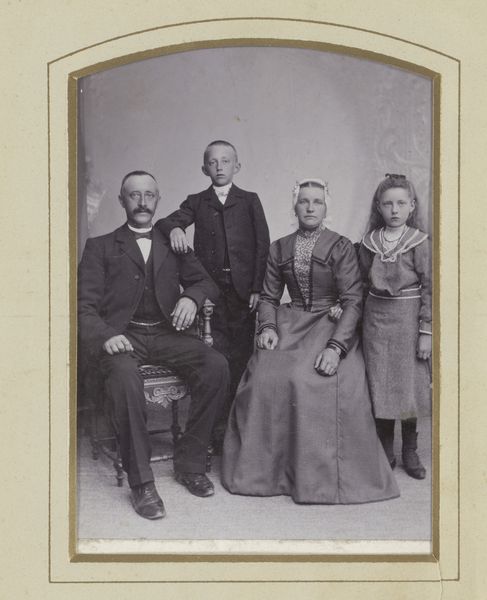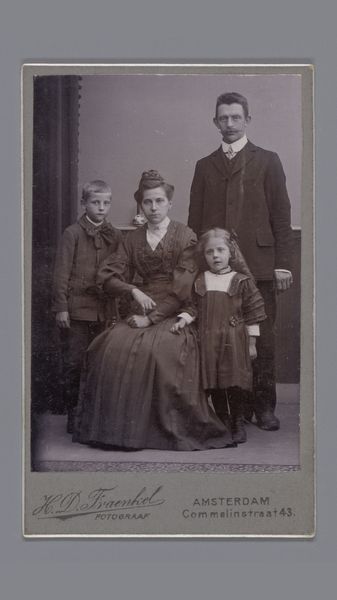
photography, gelatin-silver-print
#
portrait
#
photography
#
historical photography
#
group-portraits
#
gelatin-silver-print
#
19th century
Dimensions: height 88 mm, width 58 mm, height 95 mm, width 61 mm
Copyright: Rijks Museum: Open Domain
Curator: Right, let's dive into this historical group portrait, created sometime between 1858 and 1890 by A. Böeseken. It’s a gelatin silver print depicting a family of four. What springs to mind for you? Editor: Initially, a kind of staged formality, a stillness—the tonal range from creamy whites to shadowy blacks emphasizing each individual's posture and carefully considered placement within the frame. Curator: It has that mid-19th century feel doesn't it? It’s fascinating to think about how precious these early photographs were. Can you imagine sitting for what probably felt like ages, just to get one decent image? Each member contributing to the solemn ambiance. Editor: Precisely, and this contributes to the photograph’s strong structural composition: the father figure anchors the scene standing directly in the back while his posture frames the younger son directly in front. Look closely, the elder daughter echoes these formal vertical arrangements, mirroring it tonally and compositionally while also leaning into an embrace of sorts that disrupts the static, rectilinear composition of this domestic unit. Curator: True, there's a sort of vulnerability in the daughter’s expression, standing beside her mother. While it has elements that tie into classical portraiture of nobility from even centuries earlier, the access provided by this early photographic media offers something far more candid. Editor: Certainly, there is an accessibility to a bourgeois aesthetic. The interplay between stark clarity and tonal gradation offers a compelling tension here—emphasizing both the subjects' tangible presence while maintaining their psychological distance and creating, even if unconsciously, what can easily be read today as the alienation endemic to 19th century bourgeois familial structures. Curator: And it really does speak to our world today doesn’t it, this image preserved with silver, resonating after more than a century and a half! I love thinking about that family and wondering what their lives were actually like, what the photograph doesn't show. Editor: Yes! A powerful testament to how visual language is both deeply personal and bound to formal codifications; each mark, intentional or incidental, providing new paths toward deciphering history and our place in it.
Comments
No comments
Be the first to comment and join the conversation on the ultimate creative platform.
